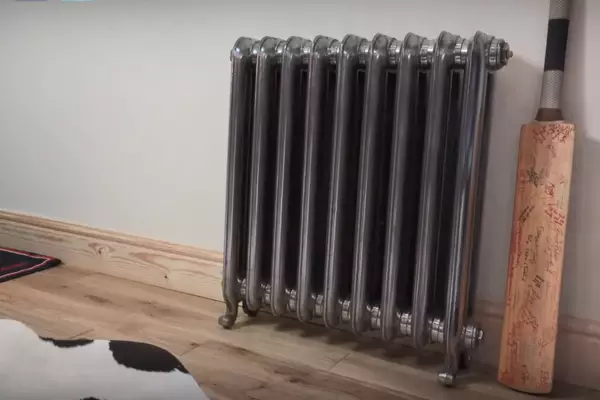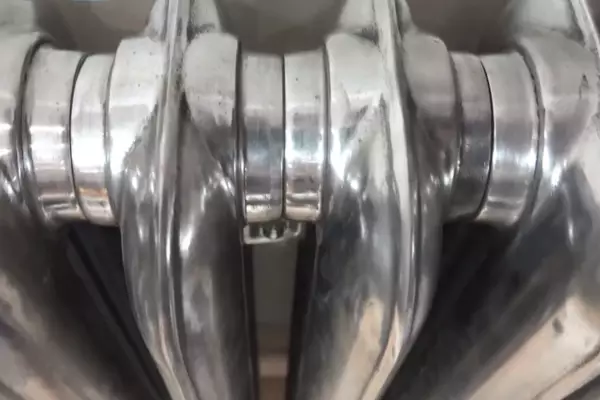With a rich history and unique aesthetics, old cast iron baseboard radiators are cherished gems. Their distinctive charm is backed by commendable durability and performance, keeping many households warm during colder months.
These radiators work efficiently, spreading heat evenly across the room, a characteristic inherent to their material – cast iron. The radiators are known for their prolonged heat retention, resulting in reduced energy consumption and significant savings on heating bills over time.
Furthermore, the sturdiness of cast iron baseboard radiators, with the proper maintenance, ensures they endure for many years, often outlasting other modern heating systems. This longevity combined with heating efficiency makes these radiators a popular choice for many.
Contents
Cast Iron Baseboard Radiators
Cast iron baseboard radiators have roots dating back to the 19th century, marking a significant milestone in the evolution of heating systems. Renowned for their durability and high heat retention, these radiators quickly gained popularity.
Advantages of Cast Iron Material
- Heat retention: Cast iron retains heat longer, maintaining a warm environment even after the heating system is turned off.
- Efficient heat distribution: It disperses heat evenly, providing a comfortable atmosphere.
- Durability: Cast iron radiators are long-lasting and can serve for decades with proper maintenance.

Drawbacks of Cast Iron Material
- Weight: Cast iron radiators are heavy, making transportation and installation a challenge.
- Slow to heat up: Due to their thermal mass, these radiators take longer to heat up than their counterparts.
Old vs. Modern Radiators
While both old and modern radiators have their unique qualities and advantages, understanding their differences is crucial in making an informed decision. Let’s dissect these variations under three categories: Performance, Aesthetics, and Durability.
Performance Comparison
When it comes to performance, the old cast iron baseboard radiators are often hailed for their superior heat retention capabilities. Due to the physical properties of cast iron, these radiators can hold and distribute heat over extended periods, ensuring a consistently warm and comfortable environment. This is particularly beneficial in regions with long and harsh winters where the need for a steady heat supply is paramount.
Modern radiators, often made from materials like aluminum or steel, heat up and cool down faster. While this allows for rapid temperature changes, it might not maintain a consistent level of warmth over time.
Aesthetics Comparison
Aesthetically, old cast iron radiators and modern radiators present very different styles. Cast iron radiators, with their classic design and ornate detailing, exude a timeless charm that can complement a range of interiors, from traditional to rustic to eclectic. These vintage pieces can add a touch of character and history to your home decor.
On the other hand, modern radiators often boast sleek designs and minimalistic lines, making them a perfect fit for contemporary or Scandinavian-inspired interiors. They’re available in a range of colors, sizes, and shapes, offering more customization options to match your personal style and decor preferences.
Durability Comparison
Cast iron baseboard radiators are known for their exceptional durability. Crafted from a sturdy material that can withstand wear and tear, these units, when maintained properly, can last for several decades, if not a century. It’s not uncommon to find well-functioning cast iron radiators in older homes, which attests to their longevity.
Modern radiators, depending on the material and build quality, may not offer the same lifespan. For instance, aluminum radiators, while being lightweight and quick to heat, are susceptible to corrosion if the water pH levels are not correctly maintained.

Price Factors for Cast Iron Radiators
The cost of cast iron baseboard radiators isn’t fixed; several factors can influence the overall price. Understanding these can help you budget effectively for your heating needs.
Size and Dimensions
The larger the radiator, the higher the price is likely to be. Size directly impacts the amount of cast iron used, which in turn influences cost. A larger radiator also has a higher heat output, effectively warming up larger rooms.
Age and Condition
Like any vintage piece, the age and condition of an old cast iron radiator can significantly affect its price. Older radiators in excellent condition, especially those with intricate designs or historical significance, may command a higher price tag.
Rarity and Desirability
Certain models or designs of old cast iron radiators might be rare or particularly sought after. These unique pieces can fetch higher prices due to their desirability.
Heating Efficiency: Cast Iron Baseboards
Cast iron baseboard radiators are renowned for their heating efficiency. Let’s explore why:
Heat Distribution
Thanks to their design and material, these radiators distribute heat evenly across the room. This uniform distribution helps maintain a comfortable temperature, eliminating cold spots that can occur with other heating systems.
Energy Consumption
Cast iron radiators may take longer to heat up, but they retain the heat for a significant period after the heating source is turned off. This characteristic makes them more energy-efficient over time, as the heating system doesn’t have to work continuously to maintain the desired temperature.
Longevity in Heat Retention
Unlike other materials, cast iron has excellent thermal mass, meaning it can store a substantial amount of heat. As a result, even after the heating system is switched off, a cast iron radiator continues to emit warmth, keeping your space cozy for longer.
Installation Process: Cast Iron Radiators
When it comes to installing old cast iron baseboard radiators, careful consideration and planning are crucial due to their weight and the complexity involved.
Professional Assistance
Seeking professional help for installation is generally advisable. Experienced professionals understand the nuances of installing these hefty units, ensuring they’re safely and correctly set up for optimal performance.
DIY Installation: Pros & Cons
While DIY installation can be rewarding and cost-effective, it’s not without challenges. The heavy weight of the radiators can make the process physically demanding. Additionally, incorrect installation can lead to leaks, poor performance, and even potential damage to your property.
Safety Precautions
Regardless of who installs the radiator, safety precautions are essential. These include securing the radiator to prevent tipping, correctly aligning pipes for efficient operation, and following local building codes and regulations.

Maintenance of Cast Iron Baseboard Radiators
Routine care for your radiator can extend its lifespan and maintain optimal performance. The key steps involve:
- Regular Inspection: Check for leaks, cold spots, and unusual sounds that could indicate issues.
- Cleaning: Remove dust and debris from the radiator’s surface. Regular cleaning aids in efficient heat transfer.
- Painting: Over time, the paint may chip off, leading to rust. A fresh coat of paint can protect the material and enhance the radiator’s look.
Common Issues and Solutions
Cast iron radiators, like any other home appliances, may face some common issues that require attention.
Cold Spots
If your radiator isn’t heating evenly, it may need to be bled to remove trapped air. You can use a radiator key for this purpose.
Unusual Noise
A noisy radiator could be due to trapped air or water hammer. Bleeding the radiator usually solves this issue.
Leakage Problem
Leaks can occur due to rust or loose joints. Minor leaks can be sealed, but major ones may require professional help.
Buying Guide: Cast Iron Radiators
When purchasing an old cast iron baseboard radiator, consider the following:
- Quality: Look for units with minimal rust and damage.
- New vs. Reclaimed: Decide between new reproductions or reclaimed radiators based on your preference.
- Ask the right questions: Inquire about the radiator’s age, condition, and previous maintenance.
Frequently Asked Questions
Why choose old cast iron baseboard radiators?
Cast iron baseboard radiators offer superior heat retention, durability, and a unique aesthetic appeal that complements many decor styles.
How to maintain a cast iron baseboard radiator?
Regular inspection, cleaning, and occasional repainting are vital to maintaining a cast iron baseboard radiator. If you encounter issues like cold spots or unusual noise, it’s advisable to consult a professional.
Is it worth investing in a cast iron baseboard radiator?
Given their longevity and energy efficiency, investing in a cast iron baseboard radiator could be a cost-effective decision in the long run.
Conclusion
Cast iron baseboard radiators have stood the test of time, proving their worth in both functionality and aesthetics. Their resilience and consistent performance indeed validate their continued popularity.
The key to their long-lasting service lies in regular maintenance and prompt attention to any arising issues. Properly cared for, these radiators can be a valuable and charming addition to your living space.
Remember, the choice of heating system should suit your personal preferences and needs. And for many, old cast iron baseboard radiators, with their efficient heating and appealing design, tick all the boxes.

